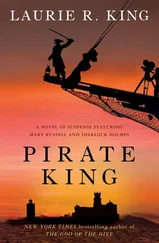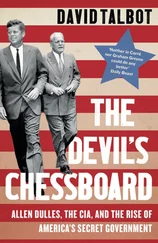Henderson tapped the dirt out of his cleats and got into his crouch, staring at the pitcher, a twenty-four-year-old right-hander for the Mesa Miners. Several nights earlier, Henderson had singled and stolen second base, sliding head first in a cloud of dust, to the delight of fans, but, this time, he hit a weak liner to the second baseman for an easy out. As he made his way to the dugout, one of the hecklers in the crowd yelled, “Hey, Rickey, where’s your fucking wheelchair?”
Other baseball greats have insisted on playing past their prime: at forty, Babe Ruth, in his last major-league season, batted.181 for the Boston Braves. But Henderson’s decision to go so far as to join the Surf Dawgs-which, the team’s former publicist admitted, was frequently assumed to be a girls’ softball team-has been a source of astonishment. His last stint in the majors was in 2003, when he played part of the season for the Los Angeles Dodgers. He hit a mere.208, with three stolen bases. (His last productive season was in 1999.) The Dodgers management, concluding that time had finally defeated “the man of steal,” as he was often called, unceremoniously released him. He had played three thousand and eighty-one games, putting him fourth on the all-time list. He was forty-four years old, and most fans reasonably assumed that he would retire and wait for his induction into the Hall of Fame. Instead, he played the 2004 season with the Newark Bears, in the independent Atlantic League, before switching to the Golden Baseball League. Manny Ramirez, the Boston Red Sox slugger, who played alongside Henderson in 2002, has said that Henderson must be “crazy,” and a sportswriter declared that it would take “a team of psychiatrists” to figure him out. Even one of his three daughters, Alexis, asked, “Dad, why are you doing this?”
A few hours before the game against the Miners, I found Henderson sitting on a metal chair in the Surf Dawgs’ locker room, with his shirt off. He insisted that he was no different from anyone else in the league: he simply wanted to make it to the majors. But he also seemed shocked by his own predicament, by the riddle of age. As he put it, “There are pieces of this puzzle that Rickey is still working out.”
He stood to put on his uniform. He is five feet ten, and, like a Rockette, most of his height seems to come from his legs, which he calls “the essence of my game;” they dwarf his torso, which always appears to be pressing forward, as if he were bursting out of a starting gate. His eyes betray frequent shifts in mood-they squint with displeasure, then widen with delight-and, during games, he often hides them behind wraparound sunglasses. He put on his jersey, which was white, with powder-blue sleeves, and pulled his pants above his hips; when he slipped on his cap, only the creases on his forehead and around his mouth confirmed that he was as old as many of his teammates’ fathers. Extending his arms, he said, “Look at me. I ain’t got no injuries. I got no problem with my eyes. My knees are good. The only problem I have is a little pain in my hip, and it ain’t nothin’ a little ice can’t cure.”
Henderson knew that he had only a few months to prove to a scout that he was able to play at the highest level-the major-league season ended in October. He told me that not long after he began playing for the Newark Bears he called Billy Beane, the general manager of the Oakland A’s. Most of Henderson’s greatest achievements in baseball, including his first World Series ring, in 1989, stemmed from his time on the A’s, and he told Beane that he wanted to return to the team more than to any other. “Then I could go out the way I came in,” he said. Beane responded that the A’s, which were currently vying for a spot in the playoffs, had no room for him. Nevertheless, Henderson said, “I ain’t giving up hope. I know if people would just come out to see me play they would realize that Rickey is still Rickey.”
He arrived hours before a game, and would slash at balls as they shot out of a pitching machine at eighty-five miles an hour, while the Surf Dawgs’ adopted theme song blared over the loudspeakers: “Who let the dogs out? Woof! Woof! Woof! Woof!” On some mornings, he could be seen running up and down the bleachers. Jose Canseco, who played with Henderson on the A’s, and who helped to fuel the explosion of performance-enhancing drugs in the major leagues, has said of Henderson, “That’s one of the guys who’s not on steroids!”
“They kept that shit a secret from me,” Henderson said. “I wish they had told me. My God, could you imagine Rickey on ’roids? Oh, baby, look out!” He laughed in an easygoing way. “Maybe if they weren’t juicing there’d still be a spot on a ball club for me. People always ask me why I still want to play, but I want to know why no one will give me an opportunity.
It’s like they put a stamp on me: ‘Hall of Fame. You’re done. That’s it.’ It’s a goddam shame.”
As Henderson was talking to me, one of his teammates, who had tousled hair and looked to be about eighteen, walked over. He was holding a baseball and a pen in his hand. He said to Henderson, “I feel funny asking, but could you sign this?”
Henderson smiled and signed the ball.
“Thank you, Rickey,” the young man said, holding the ball along the seams, so as not to smudge the ink.
Henderson turned back to me, and said, “I’ll tell you the truth. I’d give everything up-every record, the Hall of Fame, all of it-for just one more chance.”
Base stealers are often considered their own breed: reckless, egocentric, sometimes even a touch mad. Ron LeFlore, who stole ninety-seven bases with the Montreal Expos, was a convicted armed robber; Ty Cobb, who was called “psychotic” by his authorized biographer, used to slide with his spikes in the air, in an effort to take out the second baseman; even Lou Brock, who was more gentlemanly, believed that one of his greatest assets was unbridled arrogance. Henderson, by all accounts, was a natural-born thief. Lloyd Moseby, a childhood friend of his who played for the Toronto Blue Jays, told Sports Illustrated, “Rickey hasn’t changed since he was a little kid. He could strut before he could walk, and he always lived for the lights.”
Henderson grew up with little outside the game: when he was two, his father disappeared, abandoning the family, and, after his mother moved to California to find work, he and his four brothers remained in Pine Bluff, Arkansas, for several years, in the care of a grandmother. In 1976, when Henderson was seventeen, the Oakland A’s drafted him in the fourth round and assigned him to one of their minor-league teams, in Boise, Idaho. From the beginning, he was intense, moody, and flamboyant. If he hit what looked like an easy ground out, he sometimes refused to run it out, to the consternation of the manager. But, when he thought the opportunity was ripe, his speed was unparalleled. One night in Fresno, California, in 1977, he stole seven bases, tying the record for a single game. Two years later, in the middle of the season, the Oakland A’s called him up to the majors.
With his new money, Henderson hired a group of detectives to find his father. “I didn’t care if he was a bad guy or a good guy,” Henderson told me. “I just wanted to know him.” The private eyes reported back to his mother, who informed him, “Your father is dead. He died a few years ago in a car accident.” In 1980, however, Henderson found an unlikely father figure in Billy Martin, the A’s new manager. Martin was a pugnacious drinker who, on at least one occasion, slugged one of his own players. But he and Henderson shared an in-your-face approach to the game-Martin hung on his office wall a poster that said, “There can be no rainbow without a cloud and a storm”-and together they developed a manic style of play, known as Billy Ball, that was as terrifying as it was exhilarating. As Henderson has put it, “Billy was the publisher of Billy Ball, and I was the author.”
Читать дальше











